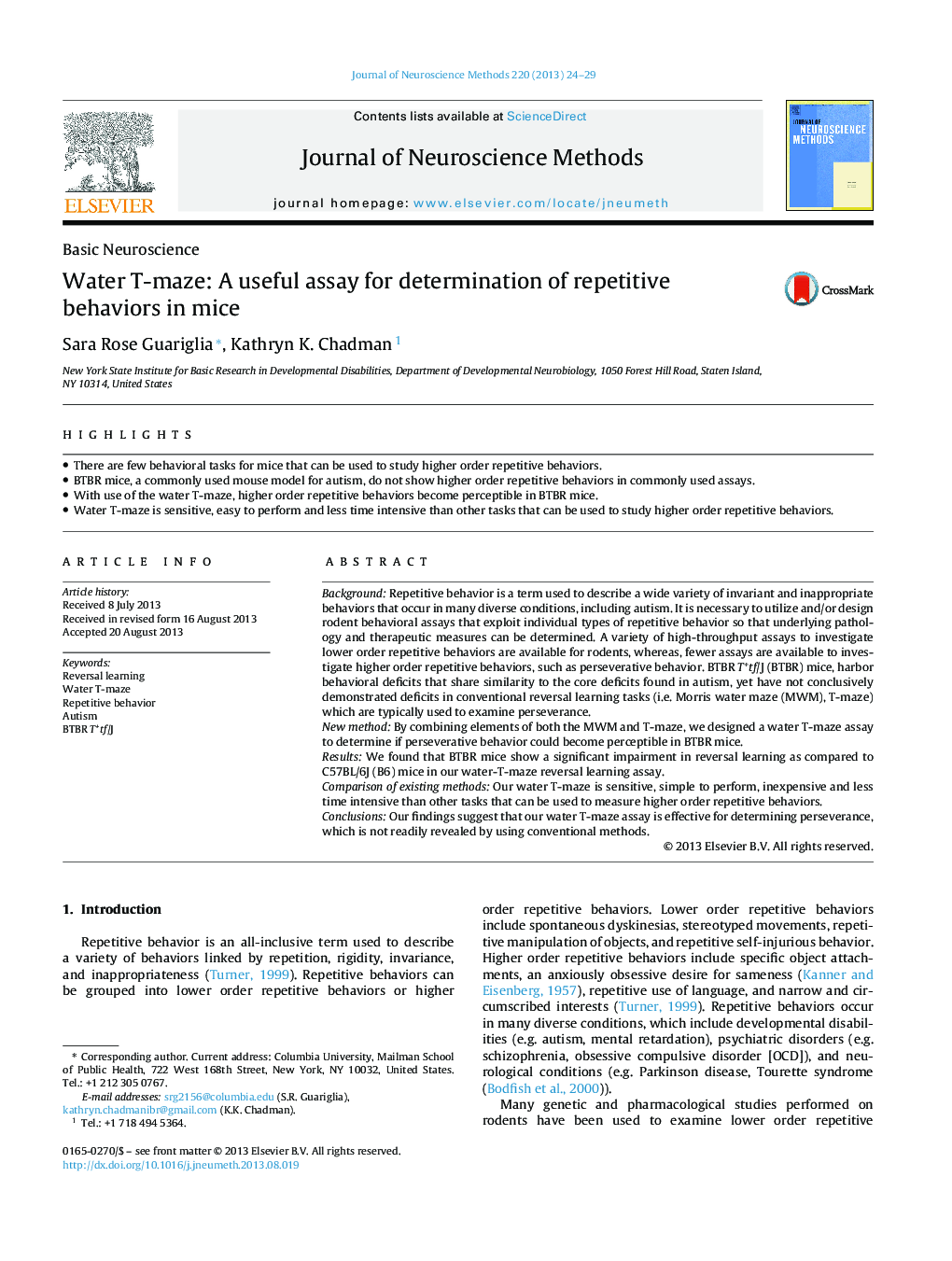| Article ID | Journal | Published Year | Pages | File Type |
|---|---|---|---|---|
| 6268936 | Journal of Neuroscience Methods | 2013 | 6 Pages |
â¢There are few behavioral tasks for mice that can be used to study higher order repetitive behaviors.â¢BTBR mice, a commonly used mouse model for autism, do not show higher order repetitive behaviors in commonly used assays.â¢With use of the water T-maze, higher order repetitive behaviors become perceptible in BTBR mice.â¢Water T-maze is sensitive, easy to perform and less time intensive than other tasks that can be used to study higher order repetitive behaviors.
BackgroundRepetitive behavior is a term used to describe a wide variety of invariant and inappropriate behaviors that occur in many diverse conditions, including autism. It is necessary to utilize and/or design rodent behavioral assays that exploit individual types of repetitive behavior so that underlying pathology and therapeutic measures can be determined. A variety of high-throughput assays to investigate lower order repetitive behaviors are available for rodents, whereas, fewer assays are available to investigate higher order repetitive behaviors, such as perseverative behavior. BTBR T+tf/J (BTBR) mice, harbor behavioral deficits that share similarity to the core deficits found in autism, yet have not conclusively demonstrated deficits in conventional reversal learning tasks (i.e. Morris water maze (MWM), T-maze) which are typically used to examine perseverance.New methodBy combining elements of both the MWM and T-maze, we designed a water T-maze assay to determine if perseverative behavior could become perceptible in BTBR mice.ResultsWe found that BTBR mice show a significant impairment in reversal learning as compared to C57BL/6J (B6) mice in our water-T-maze reversal learning assay.Comparison of existing methodsOur water T-maze is sensitive, simple to perform, inexpensive and less time intensive than other tasks that can be used to measure higher order repetitive behaviors.ConclusionsOur findings suggest that our water T-maze assay is effective for determining perseverance, which is not readily revealed by using conventional methods.
